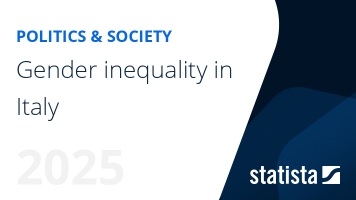While gender equality is a fundamental human right, it is also one of the gravest human rights challenges that our society faces today. With women’s empowerment, gender equality contributes to achieving peaceful and resilient communities, sustainable development, and economic growth. Despite several strides toward closing the gender inequality gap and addressing discrimination in the past few decades, India still ranks among the lowest countries in the gender equality index . Further, attitudinal disparities, stereotyping, and blindly adhering to social norms have kept gender inequality thriving.
Dominant patriarchal society
Half of India’s population comprises women, yet
women have been disadvantaged in the country's economic prosperity. Even though the constitution of India permits equal rights to both men and women, gender disparities are evident and rampant throughout the country.
India is predominantly based on strong patriarchal and patrilineal customs. In such social systems, men are typically granted more privileges than women. What’s more, men are viewed as authority figures over women and children in the family and in roles of leadership, in addition to controlling property and wealth. This is particularly
evident with inheritances, where wealth and property are passed down from father to son, and in the case of dowry, where the groom’s family is entitled to payment in cash or kind by the bride’s family. Another crucial factor that gives impetus to gender inequality is the
preference for sons over daughters. Sons are deemed to have more economic utility since they can better support the farm or family business.
Education
Gender inequality has its roots primarily in poverty, unemployment, strong conceptual conservatism, and unemployment. However, the topmost rung of this ladder belongs to illiteracy and lack of quality education that permeates through to all the underlying rungs. Literacy is the first step toward understanding women’s rights and achieving empowerment, affording women with an arsenal of tools to improve the quality of their lives. The
literacy rate among the male population in India stands at approximately 84 percent, while that of women is roughly 72 percent. However, this gap was more evident in rural India as opposed to the urban areas. National studies revealed that illiterate women were generally unemployed or poorly paid and tended to get
married at early ages. In addition, women from marginalized societies were inclined to have more children, which could possibly diminish the quality of their own lives and that of their family members. Further, outcomes reflected that poorly educated women were more susceptible to control being imposed by their husbands. While there is increasing recognition of the importance of education, particularly for women, the country’s policies and programs thus far have failed to address the literacy gaps.
This text provides general information. Statista assumes no
liability for the information given being complete or correct.
Due to varying update cycles, statistics can display more up-to-date
data than referenced in the text.





































